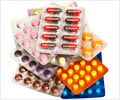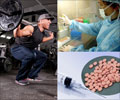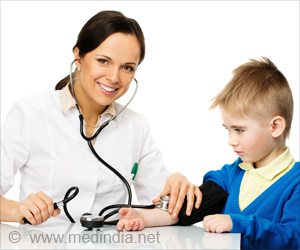Non-steroidal and tissue-selective anabolic agents such as Selective Androgen Receptor Modulators (SARMs) are being sold on the black market for their performance enhancing qualities, researchers from the German Sport University Cologne in Germany have found.
The availability of authentic SARMs was recently demonstrated for the first time by the detection of the drug candidate Andarine in a product sold via the Internet. Full findings of the study appear in the latest issue of Drug Testing and Analysis published by Wiley-Blackwell.SARMs represent a promising class of therapeutics for the treatment of various diseases such as sarcopenia, osteoporosis, benign prostatic hyperplasia (BPH), and cancer cachexia. While none of these agents have yet been approved for therapeutic use, SARMs are gaining popularity in the sports doping community because they are believed to provide the benefits of traditional anabolic/androgenic steroids such as testosterone with fewer unwanted side effects.
In 2008, the World Anti-Doping Agency (WADA) prohibited the use of SARMs in sports due to their potential for misuse. WADA closely cooperates with pharmaceutical and biotechnological companies, as well as medicine agencies and drug evaluation bodies on the issue of therapeutics being misused in sports. WADA's preventive approach was validated with the recent finding of a commercially available, non-approved arylpropionamide-derived SARM termed Andarine. This product, declared as green tea extracts and face moisturizer to pass customs, was available on the Internet at a discount price of $100 USD.
To prove that SARMs lacking clinical approval are distributed and potentially misused in sports, Mario Thevis, Ph.D., and colleagues, analyzed the advertised substance using state-of-the-art mass spectrometric approaches with high resolution/high accuracy (tandem) mass spectrometry. "One unit (30 mL) was purchased online and delivered in a box labeled to contain face moisturizer and green tea extract. The sealed bottle did not declare any content and no further documents accompanied package," said Dr. Thevis. He went on to explain that LC-MS(/MS) analysis of this solution revealed the presence of S-4 at approximately 150 mg/mL with equal amounts in each container, yielding a total of 4.5 g of the SARM. The active ingredient was identified and characterized by a) its elemental composition (as determined by high resolution/high accuracy mass spectrometry, b) comparison to synthesized reference material regarding retention time and product ion mass spectrum, and c) elucidation of its mass spectrometric behavior. Besides the detection of the active ingredient S-4, a significant amount of byproduct was observed.
"Major concerns result from these findings," explained Dr. Thevis. "This product with considerable anabolic properties is readily available without sufficient research on its undesirable effects; this is especially significant where uncontrolled dosing is applied and drug impurities with unknown effects are present in considerable amounts as observed in the studied material."
The issue was recently addressed at the Conference of Parties to the International Convention against Doping in Sport, held October 26-28, 2009 at the United Nations Educational, Scientific and Cultural Organization's (UNESCO) headquarters in Paris. WADA President John Fahey said that government agencies will need to adopt laws and regulations to combat the trafficking and supply of illegal substances in order to rid sport of doping.
Advertisement
Advertisement
RAS













